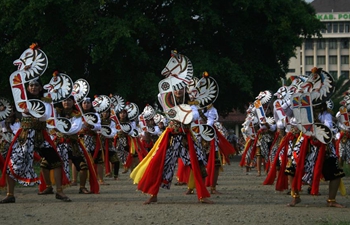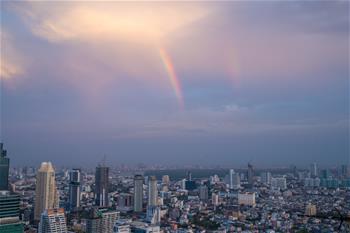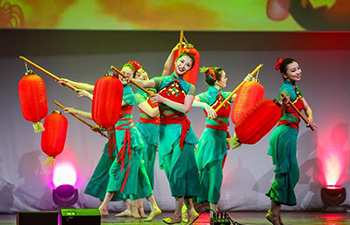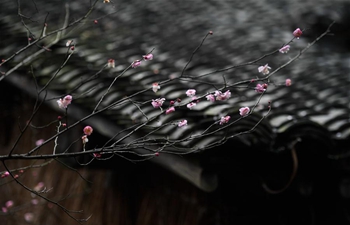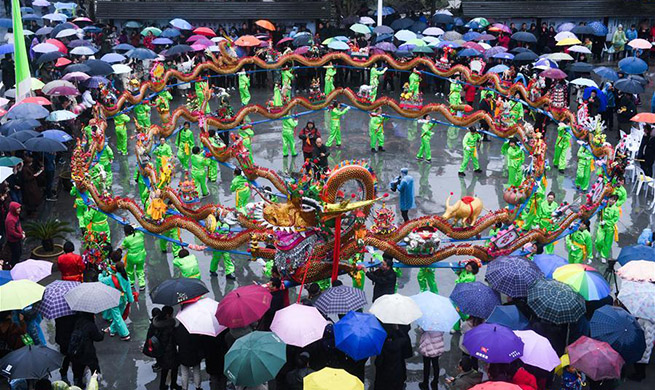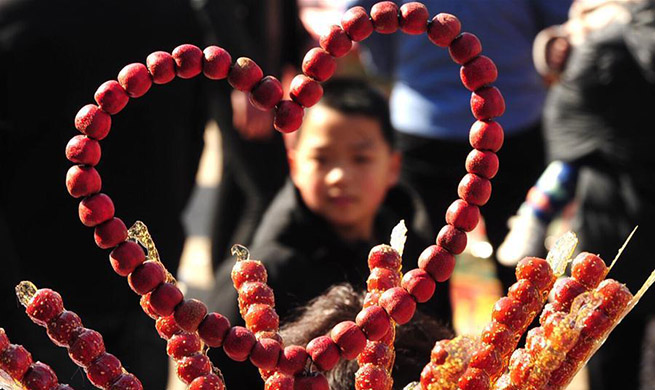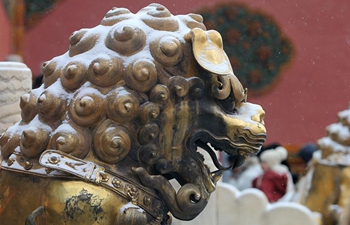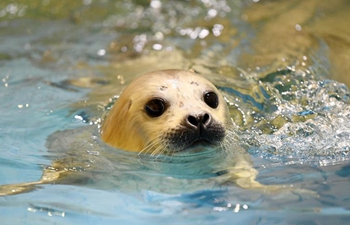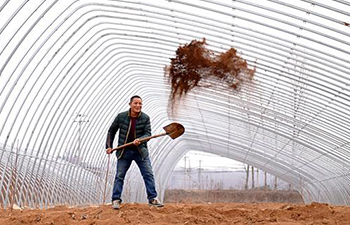SAN FRANCISCO, Feb. 17 (Xinhua) -- Wearing a T-shirt with the Chinese characters of "China Camp," Claire welcomed visitors behind the counter of a cafe at the entrance of a state park in Northern California.
"We work here at weekends, so visitors can walk in and learn a little bit about the history," said Claire, a volunteer who preferred to be identified only by her first name.
"I'm still nervous when tourists come up with questions," she said.
China Camp, a century-old fishing village of Chinese immigrants on the northern shore of San Francisco Bay, is now a historical site of cultural significance inside the China Camp State Park.
Despite the rainy weather, many visitors came to the park on Sunday, learning fishermen's stories at a wooden shack-turned museum, or relaxing on the beach.
Next to the museum is a red brick oven, which the fishermen used to dry up shrimps and export them to China. A few original houses, with the original furniture inside, were preserved, along with a vegetable garden and chicken coop.
Plaques with Chinese and English inscriptions are placed before these historic sites so that visitors can learn about the history and experience the way of life in this village.
"It is very interesting to learn Chinese immigrants had such a rich history in the Bay Area," said Andrew Chang, a Chinese descendant living in the Bay Area. He said he hadn't heard of China Camp until recently from a news story.
"This part of Marin County is a tranquil and beautiful place. I'm glad it is preserved as a state park," said Chang, after visiting the museum.
At the museum, several panels with historical photos and introductions on the camp and the communities, fishing and processing the shrimps, and the fishermen's working boats -- "sampan" -- are installed against the wall.
At a corner of the room is a replica of a fishermen's room -- a big pile of dried shrimps and stacks of bamboo baskets and bamboo chairs. The scene is shown on a historical photo taken in the winter of 1888 to 1889.
Once a thriving village, China Camp was established around the Gold Rush era more than 160 years ago. It witnessed the anti-Chinese sentiment in the 1880s as the fishermen lived on their own in the village and seldom went outside.
The village had almost 500 residents at its peak in the 1880s. More than 3 million pounds of shrimps were harvested from the bay each year, most of them were dried for export to China.
But the population declined gradually amid the rising anti-Chinese sentiment and the Chinese Exclusion Act of 1882.
"Of course, prejudice and persecution were part of the reasons that drove them to remote locations to fish and live their lives," said Chang. "You have to admire their perseverance and ingenuity."
The China Camp Historic District, including the residences and shrimp drying building, was added to the U.S. National Register of Historic Places in 1979, for having state-level significance in archeology, architecture, commerce, settlement, and social history.
In the late 1970s, the 36-acre (about 146,000 square meters) village was donated by a developer to the state of California. In 2011, a non-profit group "Friends of China Camp" took over the park from the state parks department to avoid closure because of statewide budget cuts.
The group has since been rallying donors and volunteers to keep the park open. Today, the group provides all staffing in the park and oversees daily operations.
Helen Sitchler, a docent who works at the museum on weekends, is responsible for recruiting and training volunteer docents. There are currently six to eight docents at the park, she said.
During summer, the beach was full of people, and among them were international tourists, said Sitchler. That's why there's always the demand for docents, she said.
In recent years, the park has seen a remarkable increase in visitation, both domestic and overseas. The group had only 25 members in 2012, but it now has more than 800.
Thousands of people have signed up for their newsletter, according to the Friends of China Camp.
"My grandson once thought it was just 'dilapidated wooden shacks,' but now he's helping with the park's annual Heritage Day event," said Claire.

